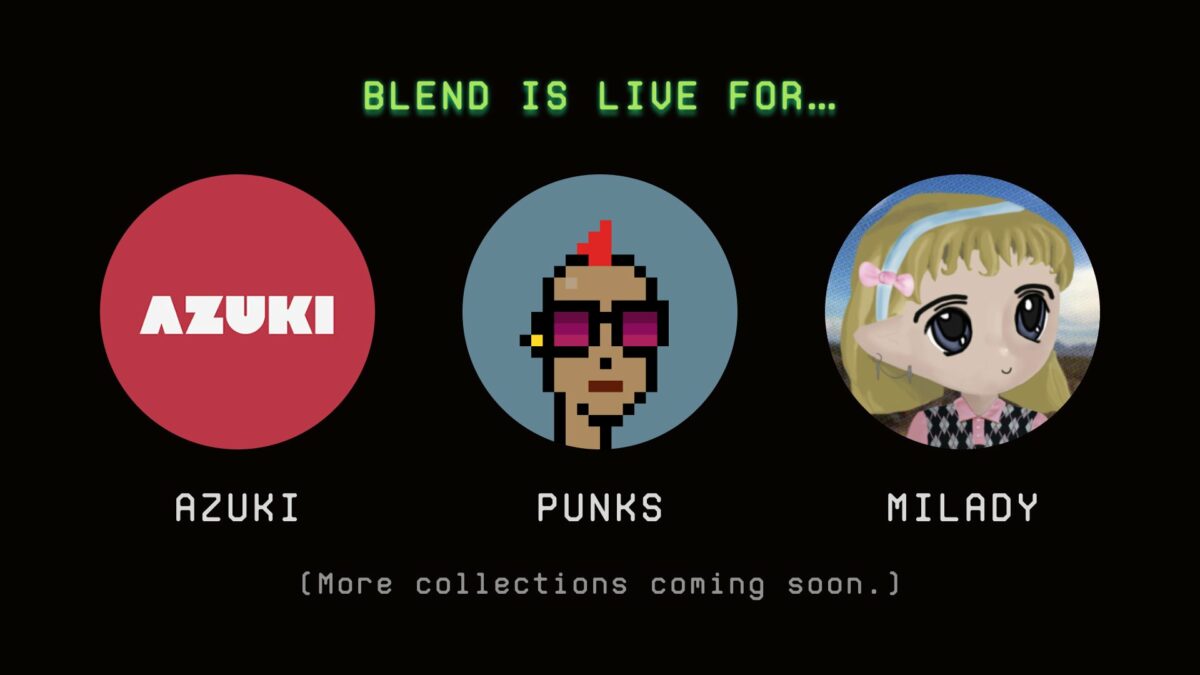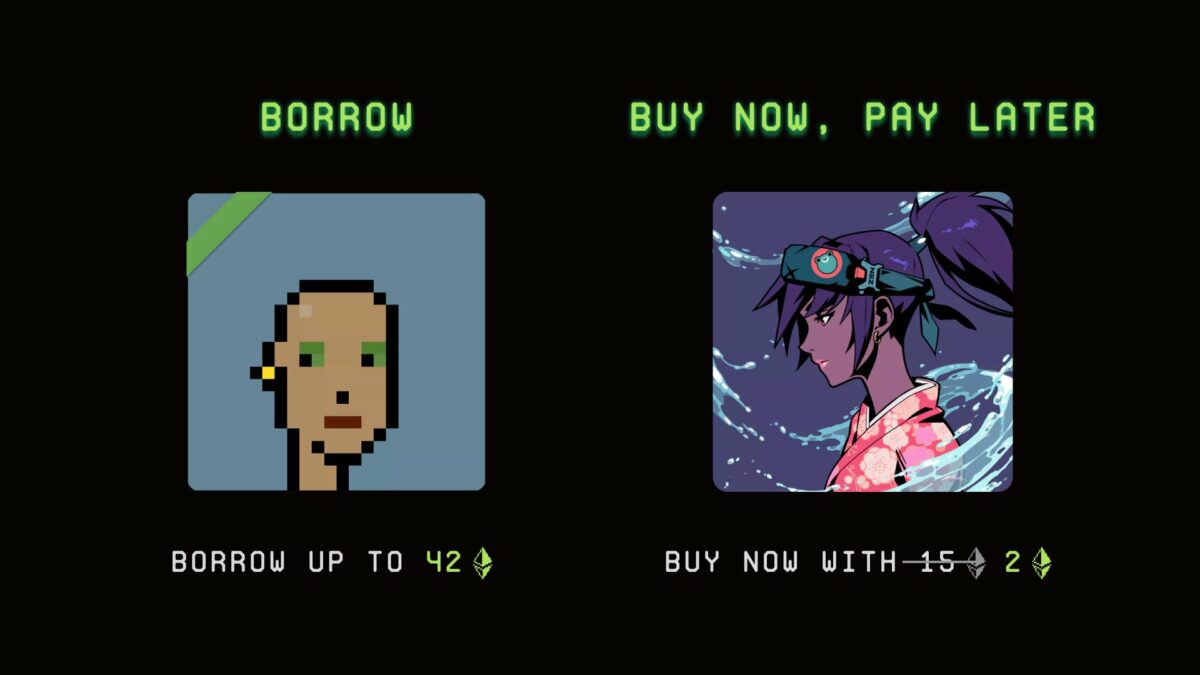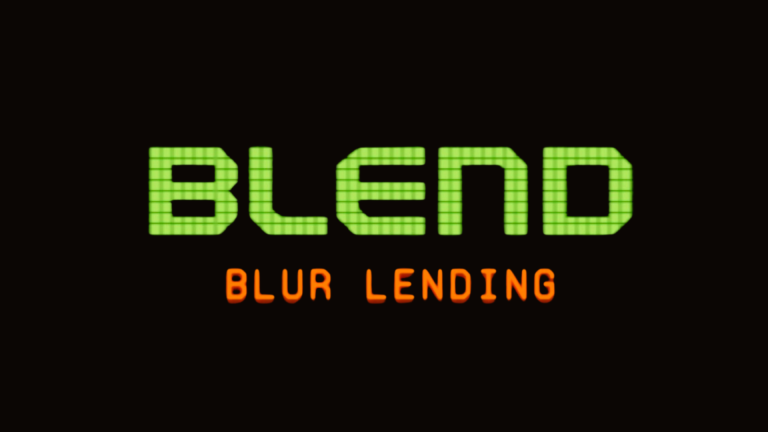Once again, the NFT marketplace and aggregator Blur has shaken up the NFT space. On May 1, the company announced the launch of Blend, a peer-to-peer lending protocol built alongside Web3 investment firm Paradigm. Blur claims the new protocol will help unlock liquidity for NFTs and help grow the market overall.
In the first 24 hours of its release, Blend became the number one lending protocol both by volume and users on the Ethereum blockchain.
Unsurprisingly, the launch has been met with praise, criticism, and everything in between. Blur is no stranger to controversy, but its latest move is its most contentious and influential to date. Here’s what you need to know about how Blend could affect the NFT ecosystem, what people are saying about it, and why it matters.
How does Blend work?
Blend powers two new product offerings from Blur. The first allows people to use their NFTs as collateral to access ETH liquidity. The second is the buy-now-pay-later function, which lets users gain access to expensive blue-chip NFTs for a small down payment. Currently, Blur users can only use Blend on three NFT collections, including Azuki, CryptoPunks, and Milady Maker. However, the platform said it will add more collections in the near future.
What sets Blend apart from other lending protocols like NFTfi is that Blend loans are set at fixed rates and have no expiration date, accruing interest until the loan is repaid. Blend automatically “rolls a borrowing position for as long as some lender is willing to lend that amount against the collateral,” and on-chain transactions are only required if someone decides to exit the position or if there is a change in interest rate.
Borrowers can repay their loan at any time. If a borrower fails to pay the full amount at the expiration time, lenders can initiate a Dutch auction refinancing option (whenever they want). New lenders can then overtake the loan at an interest rate that appeals to them. If there are no interested bidders on the loan, the original lender then gets ownership of the collateralized NFT.
And because Blur is offering rewards to users who offer loans, lenders are incentivized to offer favorable terms.


The risk involved for the borrower can be significant; they have a 24-hour period to pay their loan back if the lender triggers a 30-hour loan auction. If they can’t, the interest rate on the loan can increase significantly to make it appealing to other potential lenders. Lenders also run the risk of not being able to find someone to take over the loan in that 30-hour timeframe. While the lender would receive the NFT as collateral for the loan at this point, its value is unlikely to cover the amount of the loan they gave out.
As the platform offers platform points rewards to lenders, Blur users are incentivized to engage with the marketplace’s newest toys. The company has also made it clear that there are no marketplace fees for borrowing or lending, though Blend fees are managed by $BLUR token holders. After a 180-day period, the Blur DAO will vote on whether to change fees for lenders and borrowers. For the time being, Blend is drawing users to the platform, contributing to Blend’s sudden rise to the top of the lending protocol hill.
As such, Web3 is already feeling the effects of Blur’s latest launch, and the company’s one-stop-shop strategy seems to be paying dividends. Alongside Blend’s release, Blur has updated the way it’s doling out rewards points, recently stating that points might change on a per-collection basis.
Blur is guaranteed to stir the pot whenever it makes an announcement. And, despite Web3’s well-earned reputation for being unnecessarily hyperbolic, it’s true that few other platforms make as many bold moves as Blur does (save OpenSea, perhaps). But the difference between those two platforms is that, for the last six months or so, Blur has exhibited a tendency to act rather than react to Web3 trends.
That disposition naturally courts controversy. When the company announced it would be doubling points rewards for listing and bidding on its platform, it leaned into the financialization of tokens on its platform, which has arguably tied the health of whole NFT collections to the behavior of a handful of influential traders.
strong appreciation for paradigm’s zero-oracle, arbitrary-collateral approach
zero question in my mind that fully onchain mechanisms are the future
harder to build but much more robust. then the question becomes how to abstract away end-user complexity https://t.co/ddE5BxgcvQ
— foobar (@0xfoobar) May 1, 2023
With the announcement of Blend, along with Blur founder and core contributor Tieshun Roquerre’s (Pacman) verbal confirmation that the financialization of NFTs is something he believes is missing from the space, Blur has tripled down on a stance that has left the NFT community feeling surprised, impressed, and even more concerned about what this could mean for the future of Web3 than ever before.
From a market development perspective, some heralded Blend as a product that could significantly expand the ecosystem’s reach and inject some much-needed energy into an industry that is having a decidedly rough go of things lately. Others predicted that Blend could go so far as to counteract the effects of Blur’s bidding and listing-based points reward system, which can seriously contribute to the tanking of floor prices due to a misalignment in trading incentives.
Not everyone is so thrilled with Blur’s latest development. Artist Bryan Brinkman hit a wincingly clever note when he said Web3’s newest utility appears to be debt. At the same time, HUG co-founder Debbie Soon outlined the case for what she views as a development that deserves every comparison to the subprime mortgage crisis of 2007-2008.
What happens next
The usual suspects have already begun to take advantage of Blend, with pro-trading legend Machi Big Brother shooting to the top of the list of biggest Blur lenders on May 2. Such traders need little prompting to chase after Blur reward points. While Season 2 of the marketplace’s token-incentivized airdrop has yet to receive an official end date, Blend looks like it’s exactly what the platform needed to retain and draw in new users.
Overall, Blend has shaken up an NFT ecosystem that is hurting badly. Blur’s new gamble could be just what the space needs, breaking a poorly-healing bone to ensure it resets properly. Conversely, the worry over stacking risk on top of risk with a relatively new asset class in the rather vague name of “growing the market” is nothing to scoff at, either. The company continues to introduce powerful tools to the Web3 world. Whether those tools turn out to be too powerful or not remains to be seen.



